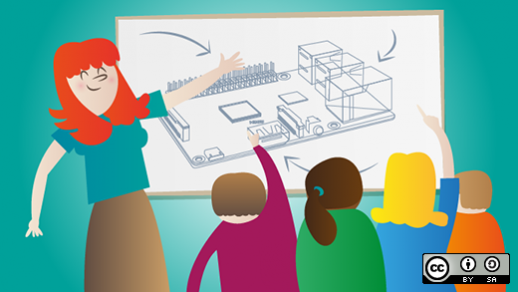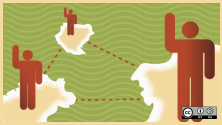Over the course of 2017, Opensource.com shared many ways that Linux and Raspberry Pi are improving education, from preK-12 schools all the way through colleges and universities. We've collected nine of the best articles that show how
these technologies are influencing teaching and learning, not to mention educational institutions' IT practices. Click through these links to find out how students and teachers are using Raspberry Pi and IT shops are benefiting from Linux.
Raspberry Pi in the classroom
- 5 ways to invigorate education with Raspberry Pi: In this article, I describe how a minimal investment in a Raspberry Pi with a power supply and the accompanying NOOBS software can make an enormous difference in the lives of students, teachers, and library patrons. I'm also challenging fellow open source advocates to join me in making minor time and financial investments in their communities to move this ball forward.
- Program LEGO Mindstorms robots over WiFi with BrickPi: In another piece, I share how Raspberry Pi and open source tools can provide a great vehicle for learning about robotics and programming using a Lego EV3 and Dexter Industries' BrickPi add-on board.
- 5 ways to use Raspberry Pi in the classroom: If you're wondering which Raspberry Pi is right for your students, check out this roadmap for what to get and how to use it to challenge students and invigorate the learning experience.
- How to turn a Raspberry Pi into an eBook server: Transforming a Raspberry Pi into a classroom eBook server is not only a great hands-on classroom project, but it also enables teachers and students to create and share original content and access existing content from open education resource (OER) providers.
- Raspberry Pi and MoodleBox make an accessible e-learning platform pair: Another how-to describes creating and hosting your own e-learning server with Moodlebox, a scalable learning solution that can be used in a classroom, library, or home.
- How to create an Internet-in-a-Box on a Raspberry Pi: The ubiquitous broadband most of us take for granted isn't a given in much of the developing world. The Internet-in-a-Box offers an incredible offline learning solution with a variety of content and applications.
- The story behind Kiwix, an offline content provider: While researching my Internet-in-a-Box article, I learned about Kiwix, the offline content reader integral to that project. Kiwix co-founder Emmanuel Engelhart shares the history of the project in this interview.
Linux and open source on the server side
- Linux to the rescue: How I introduced my organization to Linux: Jim Hall shares a unique and powerful story about how switching to Linux transformed failure to success at the University of Minnesota.
- How containers and DevOps transformed Duke University's IT department: Duke University's Chris Collins explains how the university solved its virtual machine sprawl—and changed the IT culture—with containers.
While these articles show the tremendous progress Raspberry Pi and Linux are bringing to education, there are many other ways schools are using open source to improve how they teach, learn, and run their IT systems. Check out our article on how open source overall is changing education, then let us know in the comments what education topics you'd like to see on Opensource.com in 2018.







Comments are closed.